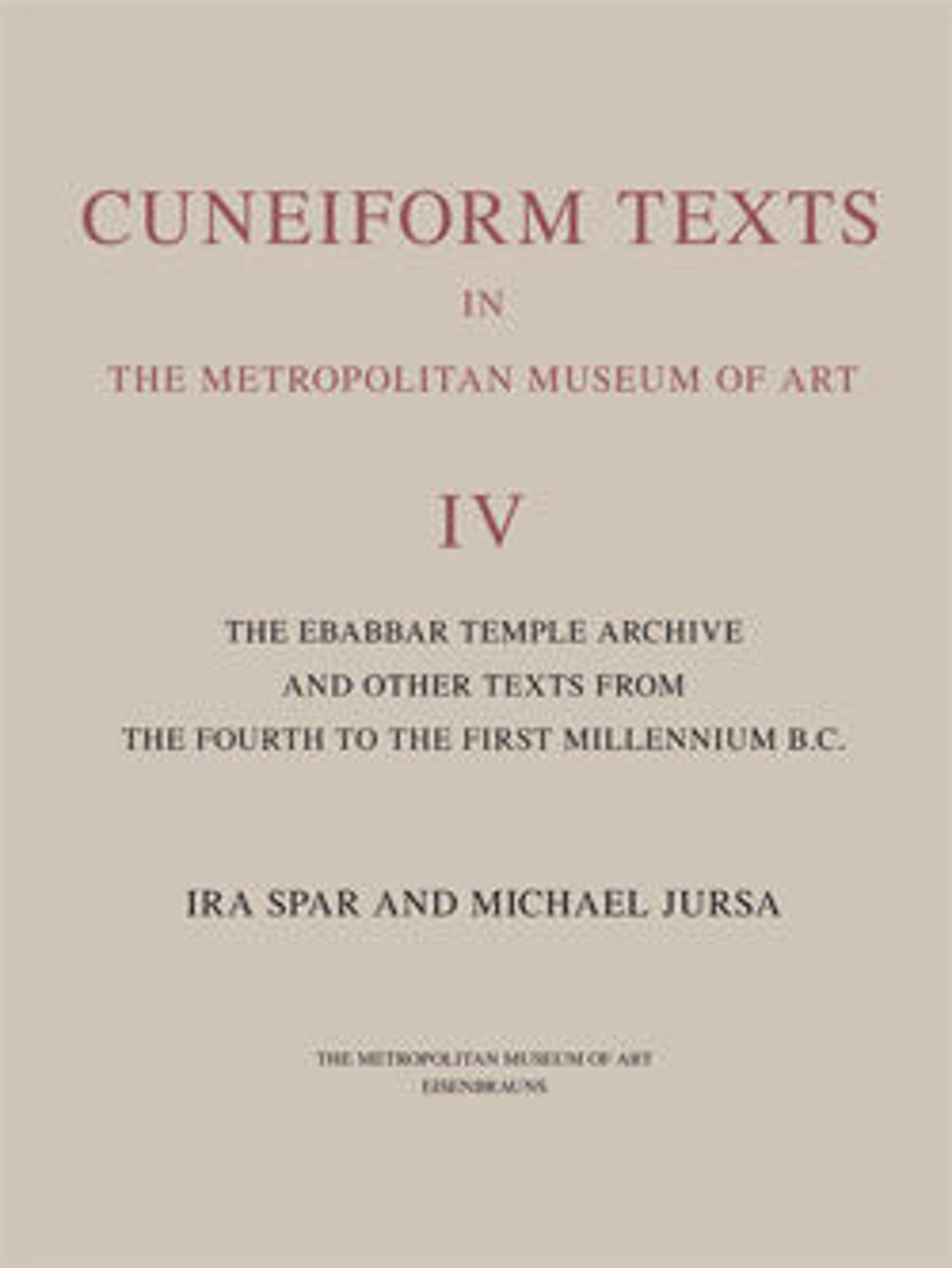Cuneiform tablet: administrative account concerning the distribution of barley and emmer
Of the many legacies left by the ancient civilizations of southern Mesopotamia, the invention of writing is paramount. At the end of the fourth millennium B.C., written language developed in the region, first as pictographs and then evolving into abstract forms called cuneiform. The pictographs, like the ones on this tablet, are called proto-cuneiform and were drawn in the clay with a pointed implement. Circular impressions alongside the pictographs represented numerical symbols. Cuneiform (meaning wedge-shaped) script was written by pressing a reed pen or stylus with a wedge-shaped tip into a clay tablet. Clay, when dried to a somewhat hardened state, made a fine surface for writing, and when fired the records written on it became permanent.
Early writing was used primarily as a means of recording and storing economic information. This tablet most likely documents deliveries and distributions of grain such as barley and emmer wheat, although the absence of verbs in early texts makes them difficult to interpret with certainty.
Early writing was used primarily as a means of recording and storing economic information. This tablet most likely documents deliveries and distributions of grain such as barley and emmer wheat, although the absence of verbs in early texts makes them difficult to interpret with certainty.
Artwork Details
- Title: Cuneiform tablet: administrative account concerning the distribution of barley and emmer
- Period: Jemdet Nasr
- Date: ca. 3100–2900 BCE
- Geography: Mesopotamia, probably from Uruk (modern Warka)
- Culture: Sumerian
- Medium: Clay
- Dimensions: 1 7/8 × 2 9/16 × 13/16 in. (4.7 × 6.5 × 2 cm)
- Credit Line: Purchase, Raymond and Beverly Sackler Gift, 1988
- Object Number: 1988.433.2
- Curatorial Department: Ancient West Asian Art
More Artwork
Research Resources
The Met provides unparalleled resources for research and welcomes an international community of students and scholars. The Met's Open Access API is where creators and researchers can connect to the The Met collection. Open Access data and public domain images are available for unrestricted commercial and noncommercial use without permission or fee.
To request images under copyright and other restrictions, please use this Image Request form.
Feedback
We continue to research and examine historical and cultural context for objects in The Met collection. If you have comments or questions about this object record, please contact us using the form below. The Museum looks forward to receiving your comments.
